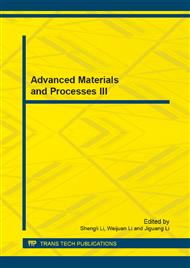p.385
p.389
p.399
p.403
p.407
p.411
p.415
p.419
p.423
Study on the Curing Reaction and Rheological Behavior of Bismaleimide Resin
Abstract:
The curing reaction of the bismaleimide resin system was analyzed by FT-IR spectroscopy and differential scanning calorimetry, and the curing reaction kinetics parameters were characterized. Otherwise the rheological behavior of the bismaleimide resin was studied through tracking the changes of the resin viscosity with reaction temperature and time by using a rotatory viscometer. The rheologic dynamic equation and dynamic index of the resin were also established under the condition of constant temperature.The result showed that the bismaleimide resin system was a typical thermosetting resin. This research will help to optimize the molding process parameters of the bismaleimide resin.
Info:
Periodical:
Pages:
407-410
Citation:
Online since:
September 2013
Authors:
Price:
Сopyright:
© 2013 Trans Tech Publications Ltd. All Rights Reserved
Share:
Citation:


